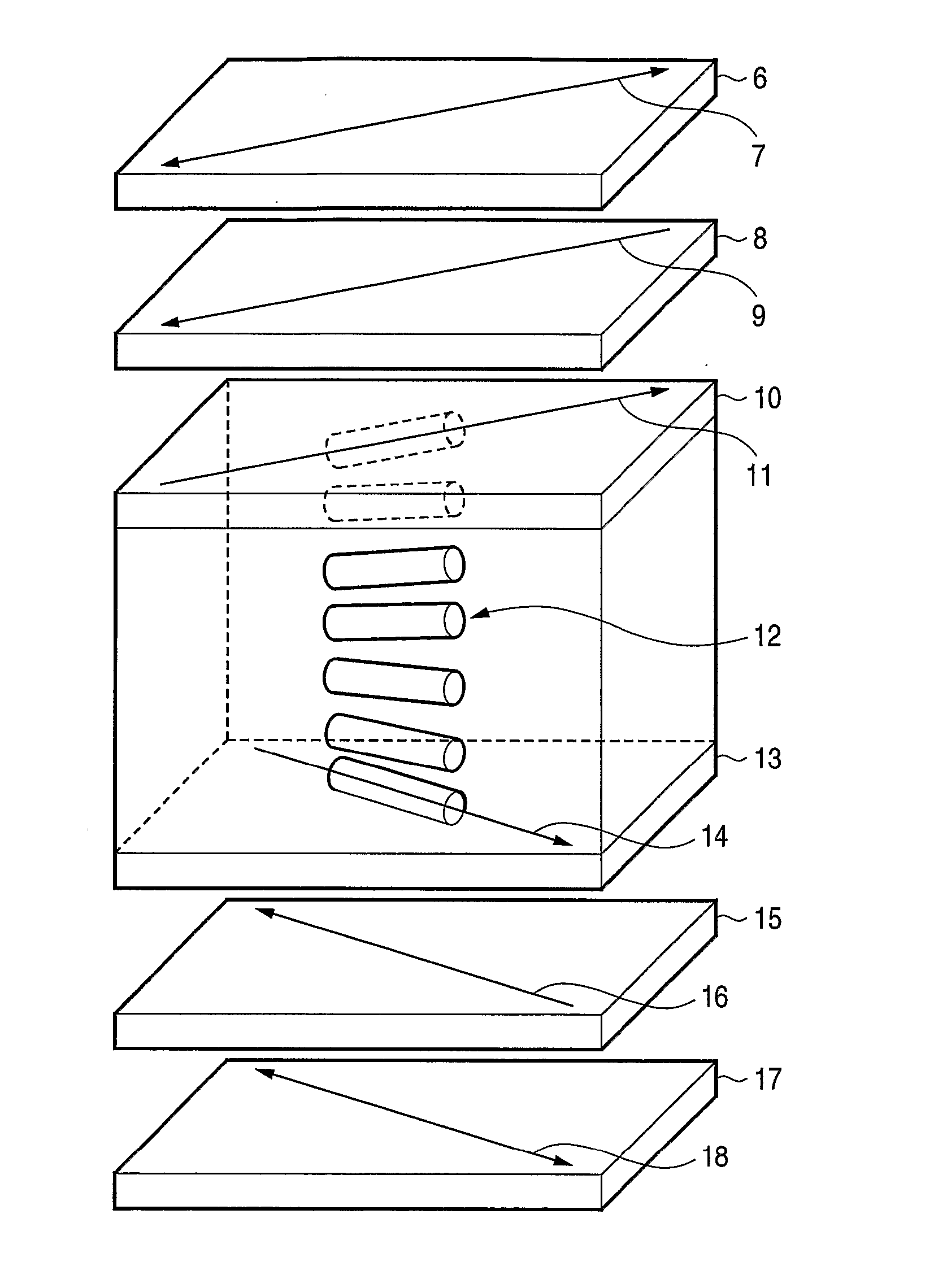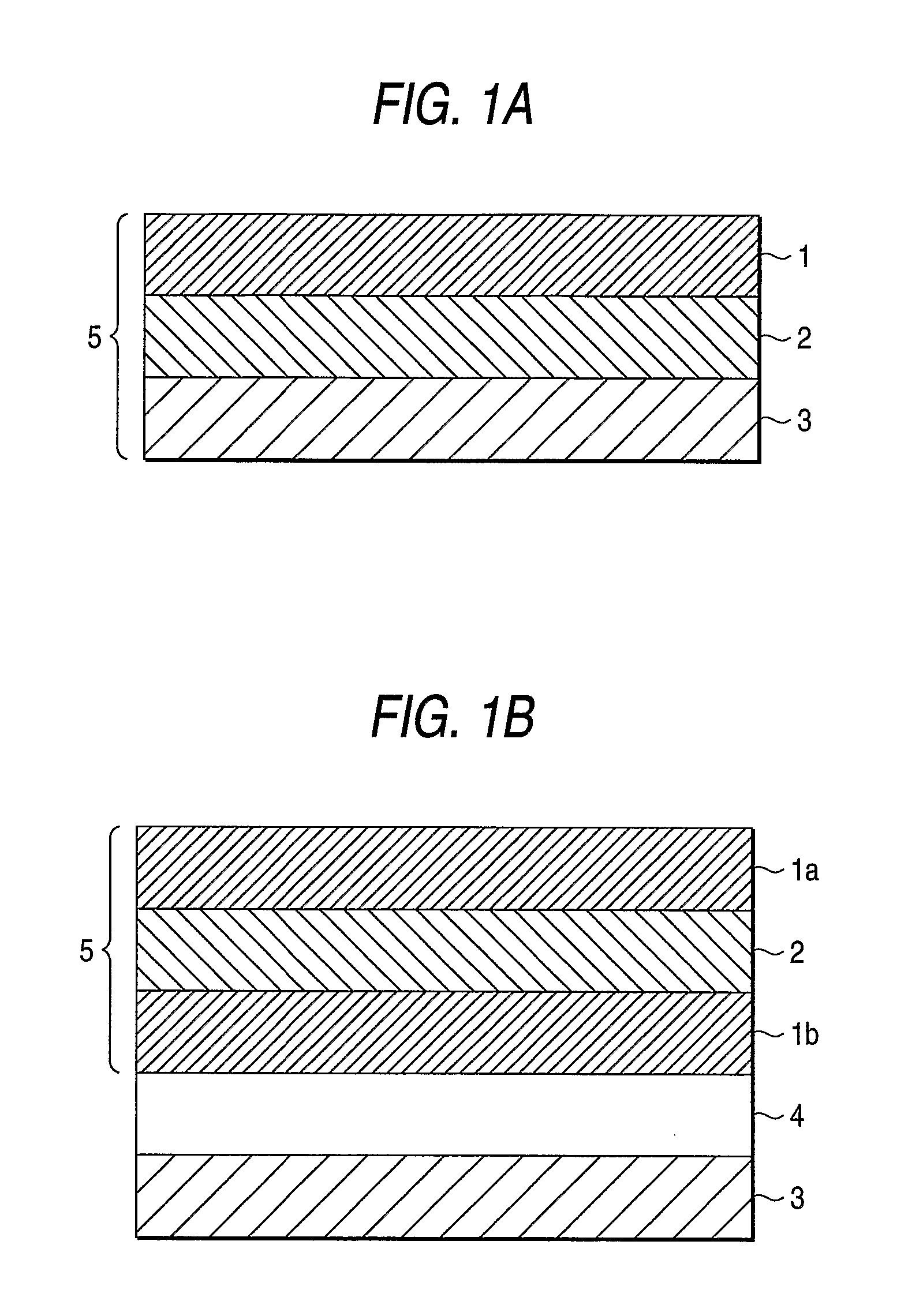Cellulose Acylate Film, Process for Producing Cellulose Acylate Film, Polarizing Plate and Liquid Crystal Display Device
a technology of cellulose acylate film and polarizing plate, which is applied in the direction of polarizing elements, lighting and heating apparatus, instruments, etc., can solve the problems of difficult compatibility between the display of retardation and the prevention of bleedout, and the uniformity of in-plane retardation
- Summary
- Abstract
- Description
- Claims
- Application Information
AI Technical Summary
Benefits of technology
Problems solved by technology
Method used
Image
Examples
synthesis example 1
Synthesis of Exemplified Compound (A-1)
[0397] A reaction vessel equipped with a stirrer, a material feeder, a reflux condenser and a thermometer having a capacity of 1,000 ml was charged with 40.1 g (189 mmol) of 2,4,5-trimethoxybenzoic acid, 16.75 g (90 mmol) of 4,4′-dihydroxy-biphenyl, 200 ml of toluene, and 2 ml of dimethylformamide, and the reaction mixture was heated at 70° C. After that, 23.6 g (198 mmol) of thionyl chloride was slowly dropwise added thereto, and the mixture was heated at 70° C. for 2.5 hours with stirring. Thereafter, the reaction solution was cooled to room temperature, and 300 ml of methanol was added. A crystal precipitated was recovered by filtration to thereby obtain 48.4 g (yield: 94%) of a compound of the object as a white crystal. Incidentally, the compound was identified by 1H-NMR (400 MHz).
[0398]1H-NMR (CDCl3): δ3.93 (s, 6H), 3.95 (s, 6H), 3.99 (s, 6H), 6.58 (s, 2H), 7.28 (d, 4H), 7.62 (m, 6H)
[0399] The resulting compound had a melting point of f...
synthesis example 2
Synthesis of Exemplified Compound (A-2)
[0400] The same reaction vessel as used in Synthesis Example 1 was charged with 34 g (160 mmol) of 2,4,5-trimethoxybenzoic acid, 15 g (73 mmol) of 4,4′-dihydroxy-3-fluorobiphenyl, 110 ml of toluene, and 1.6 ml of dimethylformamide, and the reaction mixture was heated at 70° C. After that, 20.9 g (176 mmol) of thionyl chloride was slowly dropwise added thereto, and the mixture was heated at 70° C. for 2.5 hours with stirring. Thereafter, the reaction solution was cooled to room temperature, and 300 ml of methanol was added. A crystal precipitated was recovered by filtration to thereby obtain 37 g (yield: 86%) of a compound of the object as a white crystal. Incidentally, the compound was identified by 1H-NMR (400 MHz).
[0401]1H-NMR (CDCl3): δ3.93 (s, 6H), 3.95 (s, 6H), 4.00 (s, 6H), 6.59 (s, 2H), 7.26-7.45 (m, 5H), 7.63 (m, 4H)
[0402] The resulting compound had a melting point of from 197 to 199° C.
synthesis example 3
Synthesis of Exemplified Compound (A-3)
[0403] The same reaction vessel as used in Synthesis Example 1 was charged with 23.3 g (110 mmol) of 2,4,5-trimethoxybenzoic acid, 15 g (50 mmol) of 4,4′-dihydroxy-3-chlorobiphenyl, 75 ml of toluene, and 1.1 ml of dimethylformamide, and the reaction mixture was heated at 70° C. After that, 14.4 g (121 mmol) of thionyl chloride was slowly dropwise added thereto, and the mixture was heated at 80° C. for 2.5 hours with stirring. Thereafter, the reaction solution was cooled to room temperature, and 250 ml of methanol was added. A crystal precipitated was recovered by filtration to thereby obtain 26 g (yield: 85%) of a compound of the object as a white crystal. Incidentally, the compound was identified by 1H-NMR (400 MHz).
[0404]1H-NMR (CDCl3): δ3.90-4.00 (m, 18H), 6.59 (s, 2H), 7.26-7.70 (m, 9H)
[0405] The resulting compound had a melting point of from 168 to 170° C.
PUM
| Property | Measurement | Unit |
|---|---|---|
| Fraction | aaaaa | aaaaa |
| Fraction | aaaaa | aaaaa |
| Fraction | aaaaa | aaaaa |
Abstract
Description
Claims
Application Information
 Login to View More
Login to View More - R&D
- Intellectual Property
- Life Sciences
- Materials
- Tech Scout
- Unparalleled Data Quality
- Higher Quality Content
- 60% Fewer Hallucinations
Browse by: Latest US Patents, China's latest patents, Technical Efficacy Thesaurus, Application Domain, Technology Topic, Popular Technical Reports.
© 2025 PatSnap. All rights reserved.Legal|Privacy policy|Modern Slavery Act Transparency Statement|Sitemap|About US| Contact US: help@patsnap.com



